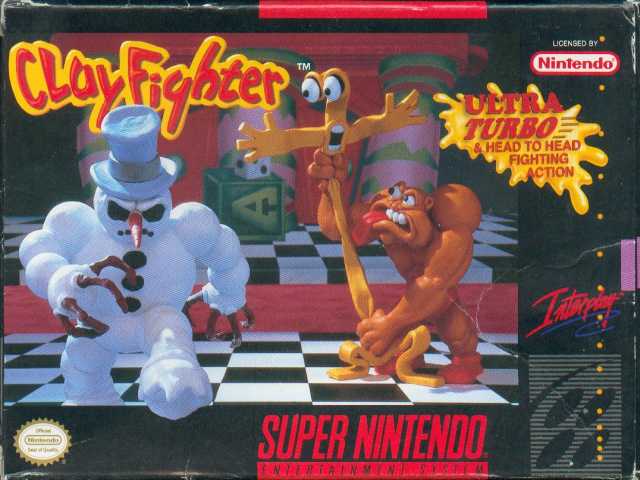Video game design often involves sophisticated software and complex coding that results in a visual and auditory experience for the user. Several designers today incorporate tactical play into video game design. Plasticine, a non-drying, non-toxic, malleable clay, developed by art teacher William Harbutt in 1897, has become an experimental tool of the trade.

Filmmakers were the first to use plasticine to sculpt and mold objects for their animated films. The style, referred to as claymation, requires the animator to arrange the clay objects on a background, expose the film frame, and then move the object ever so slightly by hand. The animator continues the cycle until the film is completed. Edwin Porter and Thomas Edison released the first stop-motion claymation film, The Sculptor’s Welsh Rarebit Dream, in 1908. Within a decade, artists Helena Smith Dayton and animator Willie Hopkins produced claymation films on a variety of subjects, and the style became a fad.
Claymation techniques prove time-consuming and laborious. A 30-minute claymation film requires approximately 21,600 composition changes, and the filmmaker must ensure that objects are not distorted by smudges, a stray hair, or bits of dust—a task many filmmakers consider tedious. By the 1920s, filmmakers replaced claymation with hand-drawn animation.
The 1950s marked the beginning of an experimental film movement. Animators started to sculpt plasticine on top of wire-armature skeletons, which provided for more flexible model movement. Art Clokey used the technique to create Gumbasia, a parody of Disney’s Fantasia in 1955. Gumbasia featured a montage of pulsating shapes and lumps of clay set to music. Clokey used the same technique to create the classic series “Gumby” and “Davey and Goliath.”

Filmmaker Will Vinton registered the term claymation in the late 1970s, and he produced short claymation films like The Little Prince, Closed Mondays, and Culture Shock. In 1986, the California Raisin Advisory Board hired Vinton to work on an ad campaign. Vinton created The California Raisins, a musical group comprised of anthropomorphized raisins that sang Marvin Gaye’s “I Heard it Through the Grapevine.” His creation of The California Raisins demonstrated the future potential of claymation. Vinton’s clay puppets possessed refined facial expressions, rich details, and amusing personalities. TV audiences responded enthusiastically to the campaign—high school students did the raisin shuffle, children asked to dress as members of the band for Halloween, and a variety of California Raisin merchandise was released including toys, lunch boxes, notebooks, clothing, and posters, among other items.
During the 1980s and 1990s, the popularity of claymation in the film industry continued with the release of clever, witty pieces like Wallace and Gromit’s “A Grand Day Out,” “Creature Comforts,” and The Nightmare Before Christmas. In 1988, Home Data released Reikai Doushi: Chinese Exorcist (Last Apostle Puppet Show), which was the first arcade fighting game to use claymation. During game play, a player assumes the role of an exorcist and decapitates ghosts with Kong-fu. The claymation visuals in the game proved intriguing, but players complained about the clunky graphics and the lack of special powers. Computer-generated imagery (CGI) technology remained the predominant medium for video games designers during much of the 1980s.
During the early 1990s, even more game designers started to work with claymation. In 1994, Interplay Entertainment released ClayFighter into a market with stiff competition from games like Mortal Kombat and Street Fighter. Brian Fargo, president of Interplay, catered to parents “who object to blood-and-guts” when he affirmed that ClayFighter was “a whole new type of product combining the excitement of competitive combat action with the new experience of manipulating pliable clay characters that bend and distort rather than explode when hit.” Interplay sought to create a game with fast action and the elaborate, multilayer architecture of top-selling arcade-style fighting games. The game centers on a circus that has been hit by meteor of clay. The goo from the meteor contaminates the circus and transforms the performers into bizarre caricatures with superpowers. The player selects from 8 fighters such as Helga, Blob, and Taffy, and slugs it out for the title of King of the Circus. Game designers formed 70 models for the character of Blob alone. Their innovative modeling techniques created for characters that bulge and distort when hit by the enemy. Blob transforms himself into a giant shoe, for example, and squashes anyone underfoot. The use of clay in ClayFighter led to surprising and humorous new looks and shapes in video games.

Two years after the release of ClayFighter, DreamWorks Interactive published The Neverhood, a point-and-click adventure game. The Neverhood follows Klaymen on his quest to save Neverhood, a world made entirely of “Klay.” Players help Klaymen solve puzzles, dethrone the villain Klogg, revive the mysterious being Hoborg, and save the planet. Game designers used 3 1/2 tons of clay to make everything in the game including the main menu and in-game text. The Neverhood’s aesthetics resembles a cross between popular films Pee Wee’s Big Adventure and Chicken Run—quirky and colorful. Critics considered the game an immediate success and now adventure gamers consider it a cult favorite.
Today claymation continues to provide designers with a tangible experience and viewers with a stunning, creative visual encounter. What I like most about claymation is the meticulous, inventive process involved with the technique, because it’s as if a designer is bringing an action figure to life.
 Hours 10 a.m.–5 p.m. | Fri. & Sat. till 8 p.m.
Hours 10 a.m.–5 p.m. | Fri. & Sat. till 8 p.m.